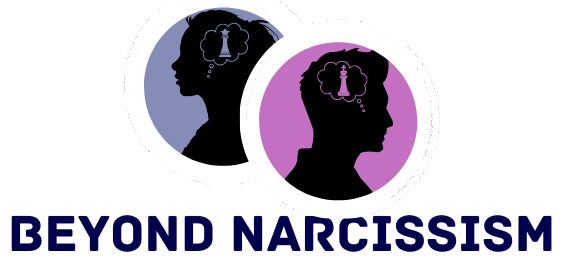Navigating the aftermath of a friendship with a narcissist can feel like piecing together a jigsaw puzzle with missing pieces. It’s a journey that demands resilience and self-compassion, as you sift through emotions that can be both confusing and overwhelming. You might find yourself questioning your own worth or struggling to trust others again, and that’s entirely understandable. Recognizing the impact such a friendship can have on your sense of self is the first step towards healing and renewal.
Understanding why rebuilding is crucial goes beyond simply moving on; it’s about reclaiming your narrative and rediscovering your own value. The scars left by a narcissistic friendship can run deep, often affecting how you view relationships and yourself. In this article, we’ll explore practical steps to rebuild your sense of self and cultivate healthier connections. You’ll learn how to set boundaries, practice self-care, and develop a support network that truly honors and respects you.
Empowerment through knowledge is a cornerstone of recovery, offering a beacon of hope and clarity. We’ll delve into recognizing patterns of narcissistic behavior that you may encounter in future relationships, helping you to protect your emotional well-being. By embracing these strategies, you can foster resilience and ensure that old wounds do not dictate your future. Together, we’ll navigate this path with empathy and understanding, guiding you toward a brighter, more fulfilling chapter of your life.
1. Recognizing Narcissistic Friendship Traits

Recognizing the subtle yet impactful traits of a narcissistic friend is the first step toward healing and rebuilding. These friendships often start with a whirlwind of charm and attention, leaving you feeling special and valued.
However, as time passes, you might notice a pattern: they constantly steer conversations back to themselves, dismissing your thoughts and feelings. This self-centered behavior can leave you feeling unheard and unimportant, a common experience when dealing with a narcissist.
Another red flag is their propensity to lack genuine empathy, often dismissing your problems or emotions. For instance, sharing a bad day might be met with a quick brush-off or a comparison to their own experiences, minimizing your feelings.
Expert insights suggest that these traits are rooted in a deep need for admiration and validation, often at the expense of others. Recognizing these signs can empower you to set healthy boundaries and reclaim your emotional space.
As you become more aware of these dynamics, you can take actionable steps to protect your emotional well-being. Understanding these traits is not just about identifying the problem but also about reclaiming your power and setting the stage for healthier relationships.
2. Processing Emotional Aftermath

After recognizing the traits of a narcissistic friendship, it’s common to feel a whirlwind of emotions. Many people report feelings of betrayal and confusion, wondering how they were drawn into such a dynamic.
It’s important to allow yourself the space to process these emotions without judgment. Consider journaling your thoughts or talking to a trusted friend to help clarify your feelings and gain perspective.
One effective technique is to practice mindfulness, which can help you focus on the present rather than dwelling on past hurts. Simple exercises like deep breathing or guided meditation can provide a sense of calm and grounding.
In real-world scenarios, individuals often find that validating their own experiences is a critical step. Recognize that your feelings are valid and that healing is a process that takes time.
Ultimately, understanding that the path to emotional recovery is a journey, not a destination, can be incredibly empowering. By nurturing your emotional health, you lay the groundwork for healthier, more fulfilling relationships in the future.
3. Rebuilding Self-Esteem and Confidence

Emerging from a friendship with a narcissist often leaves you questioning your own worth. To rebuild your self-esteem, start by reflecting on your strengths and achievements, reminding yourself of the value you bring to any relationship.
Consider engaging in activities that boost your confidence, such as taking up a new hobby or pursuing a passion you’ve set aside. By focusing on personal growth, you’ll slowly replace negative self-talk with positive affirmations about your capabilities and worth.
An example of this might be a friend who rediscovered her love for painting after leaving a toxic friendship. She found that expressing herself through art not only rebuilt her confidence but also expanded her social circle with supportive and like-minded people.
Surround yourself with individuals who genuinely uplift you and respect your boundaries. According to relationship expert Dr. Lisa Firestone, creating a circle of authentic friends can significantly enhance your self-worth and provide a strong support system.
Your journey to regaining confidence is personal and unique, so be patient with yourself. Remember, every step you take towards valuing yourself more is a step towards healthier and more fulfilling relationships.
4. Establishing Healthy Boundaries

After grappling with the aftermath of a friendship with a narcissist, it’s essential to learn how to establish healthy boundaries. This process begins by recognizing your own emotional needs and understanding that they deserve to be respected. Consider a scenario where a friend frequently calls at inconvenient times; it’s important to communicate when you are available to talk. By doing so, you reinforce your personal limits and help nurture a more balanced friendship.
Setting boundaries isn’t just about saying “no”—it’s about making space for mutual respect. Reflect on past interactions where you felt your needs were overlooked, and use these insights to guide future relationships. For instance, if a friend tends to dominate conversations, you might agree with them on alternating speaking turns. This practice not only protects your well-being but also promotes healthier patterns of communication.
It’s crucial to remember that boundaries are not meant to push people away, but to bring them closer by fostering understanding. Discuss openly with friends about what makes you comfortable and what doesn’t, which can prevent misunderstandings. A friend who truly values you will appreciate and respect your boundaries, allowing the relationship to flourish. This understanding creates a more supportive and empathetic environment for both of you.
Incorporating boundaries into your relationships fundamentally changes how you interact with the world. It empowers you to engage in connections that are healthier and more fulfilling. As you continue to rebuild your social circle, remember that boundaries are a sign of self-respect and compassion. Enjoy the newfound freedom and peace that comes with relationships where both parties are heard and valued.
5. Fostering New, Positive Connections

As you begin to rebuild your social circle, it’s essential to seek out positive, uplifting connections. Picture a garden where each plant represents a friend; nurturing those that flourish will create a vibrant environment. Consider joining clubs, classes, or community groups where you can meet people who share your interests. These settings often attract individuals open to forming genuine friendships based on mutual respect and common passions.
Reflect on past experiences to identify traits you value in others. Perhaps you cherish friends who are supportive and kind, or those who share your enthusiasm for certain hobbies. By understanding what you seek in a friendship, you can more easily recognize it in new acquaintances. Remember, just like any good relationship, building a strong friendship takes time and effort.
In your journey to forge new bonds, consider the importance of being a good friend yourself. A recent study by relationship experts highlighted that reciprocity and empathy are key in maintaining healthy connections. Show genuine interest in others’ lives and be there when they need support. This mutual exchange creates a solid foundation for lasting friendships.
Finally, don’t rush the process of developing new friendships. Allow time to build trust and understand each other’s boundaries, creating a more meaningful connection. Embrace this new chapter with a sense of adventure, knowing that each step brings you closer to a supportive and loving community. The takeaway here is that by fostering new, positive connections, you can cultivate a fulfilling and enriching social life.
Conclusion: Creating Beautiful Outdoor Spaces
Rebuilding your life after a friendship with a narcissist is a journey toward reclaiming your self-worth and emotional freedom. First, acknowledging the impact of narcissistic behavior allows you to understand and heal from past wounds. Secondly, setting firm boundaries is essential to protect your emotional space and prevent future manipulation. Third, embracing self-care practices fortifies your resilience and helps restore your sense of self. Fourth, surrounding yourself with supportive people fosters a nurturing environment for growth. Lastly, seeking professional guidance can provide valuable insights and equip you with tools to navigate complex emotions.
As an actionable next step, take a moment today to journal your thoughts about these concepts, reflecting on how they apply to your personal experiences. This will solidify your commitment to healing and growth.
Remember, your journey doesn’t end here. Save or bookmark this article to revisit these strategies whenever you need a reminder of your strength and progress. By taking these steps, you are paving the way for healthier, more fulfilling relationships in the future. Embrace the opportunity to transform past challenges into stepping stones toward a brighter relational future. You’ve got this!
